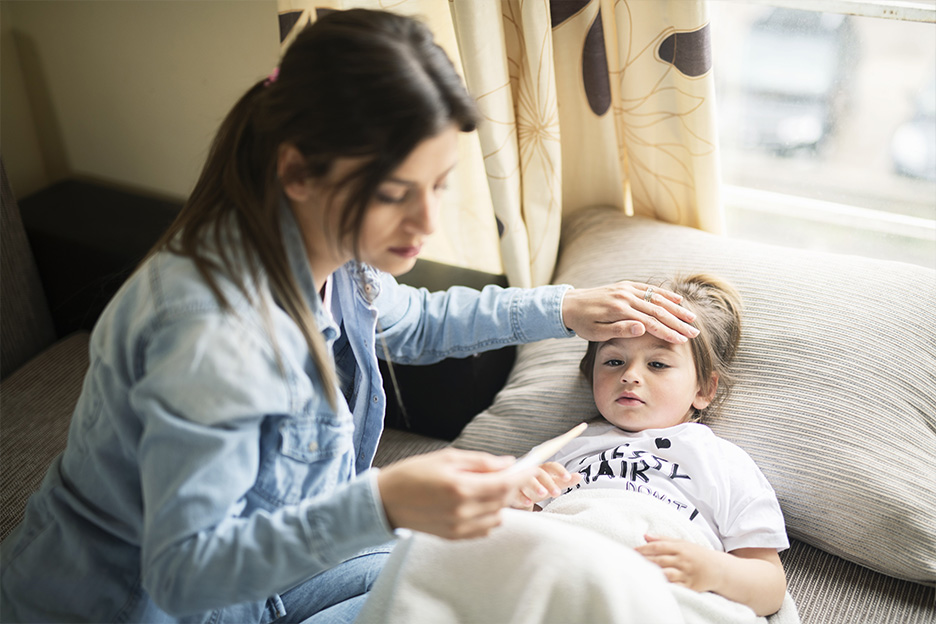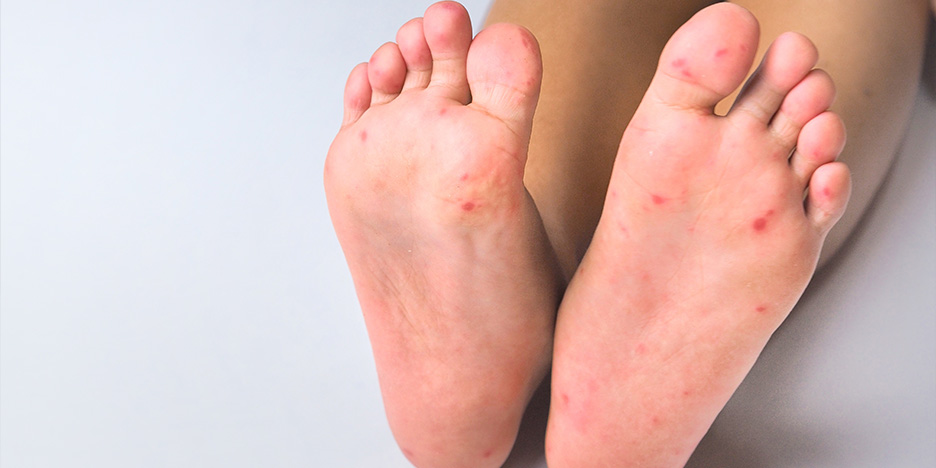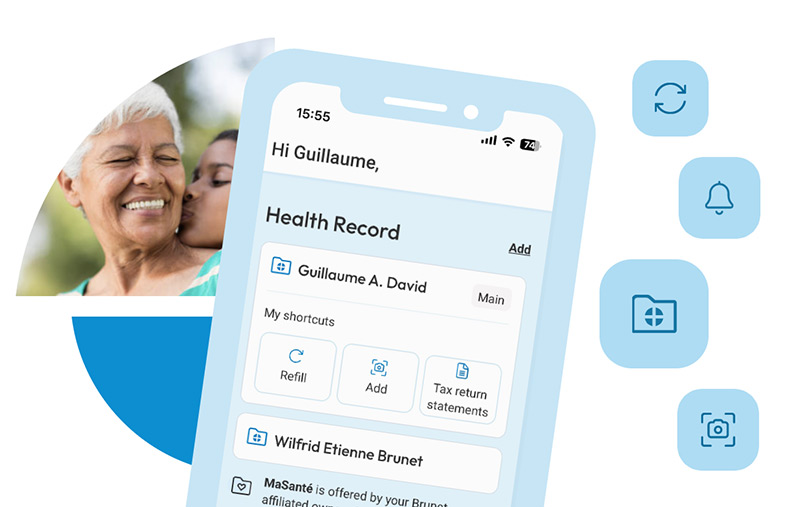Hand-foot-and-mouth disease is a viral infection that is particularly common in young children. Although this illness is often mild, it is highly contagious and can sometimes cause uncomfortable symptoms. Find out how to recognize the signs of this disease, prevent it from spreading, and relieve your child’s symptoms.

Symptoms of hand-foot-and-mouth disease
The most recognizable sign of this disease is a rash of blisters that appears on the feet, hands, and, sometimes, buttocks. Painful sores may also form inside the mouth. These often resemble red pimples with small blisters. These lesions appear on the tongue, cheeks, and gums and make swallowing difficult and painful. Symptoms generally appear between three and six days after exposure to the virus.

In addition to the telltale rash and sores, hand-foot-and-mouth disease can cause more general cold- or flu-like symptoms that vary from one person to the next:
· Fever
· Sore throat
· Cough
· Runny nose
· Headache
· Loss of appetite
· Vomiting and diarrhea
Can adults catch it?
The disease mainly affects children under the age of 10, in particular those aged 6 months to 4 years. Adults can also contract hand-foot-and-mouth disease, although they are generally immune if they had it as children. Pregnant women and people with compromised immune systems are most at risk.
What causes it?
Hand-foot-and-mouth disease is mainly caused by viruses in the enterovirus family. Coxsackievirus A16 is the most common culprit.
Is it contagious?
Hand-foot-and-mouth disease is highly contagious. The infection is transmitted through direct contact with the blister fluid, saliva, mucus, or stool of an infected child. It can also be spread indirectly via contaminated food or objects. Strict health measures, such as frequent hand-washing and disinfection of surfaces, are essential for controlling the spread of the virus.
Vanessa, a mother of three, has seen first-hand how easily this disease can be transmitted from one child to another. She recounts her experience:
"At first, just our oldest had a fever and a sore throat. But it wasn’t long before our younger two had the same symptoms. We knew they were coming down with something. A few days later, they had red bumps on their hands and in their mouths. They had trouble swallowing. I was worried, so I went to the pharmacy for advice. I showed the pharmacist pictures of my kids’ rashes and described their symptoms, and he said it was probably hand-foot-and-mouth disease. He told us what to do to relieve their symptoms and said we should see a doctor if they didn’t get better. Luckily, we didn’t have to. They were back on their feet a week or so later."
How long does it last?
The incubation period lasts 3 to 6 days. An infected child is contagious as long as they still have symptoms. Usually, symptoms clear up after 7 to 10 days. Infected individuals may also be contagious before symptoms appear and after they resolve, as the virus can stay in the stool for several weeks, making prevention more complicated.
Can my child go to daycare?
Kids with hand-foot-and-mouth disease do not have to stay at home and can still go to daycare or school. However, it’s recommended to keep your child at home if they have a fever and to notify your daycare so they can take additional health measures.
Are you immune if you’ve already had the disease?
A person who has already contracted hand-foot-and-mouth disease develops immunity to the specific virus that infected them. However, they can get sick again if they come into contact with another virus that causes the same disease.
Is there a cure?
Although there is no specific treatment for this infection, you can help your child feel more comfortable by following a few tips:
- Hydration: To avoid dehydration, encourage your child to drink fluids regularly even if their throat and mouth hurt. You can also give them ice cubes or a popsicle to relieve their discomfort and provide much-needed hydration.
- Diet: Give your child foods that are soft and easy to swallow. Avoid acidic and salty foods, as these may irritate their throat.
- Pain: Ask your pharmacist about using pediatric analgesics like acetaminophen or ibuprofen to relieve your child’s pain and bring down their fever. If your child is old enough, you can have them gargle a homemade salt water solution (½ tsp of salt mixed with 1 cup of water) to relieve their sore throat.
Regardless of what you do, the disease will run its course and symptoms should resolve on their own after about 10 days.
By practising good hygiene, treating your child’s symptoms, and following your pharmacist's advice, you can help your child feel better and limit the spread of the virus. If your child’s symptoms persist or worsen, don’t hesitate to consult a health care professional.
You may also be interested in these articles about children’s health
Learn more about the most common childhood illnesses
Listen to this episode of the French-language podcast MaSanté sans tabous.
S2 - Ep4 - "Les virus les plus communs chez les enfants"
When it comes to chickenpox, gastroenteritis, and ear infections, many parents hold their breath and hope for the best. Annie-Soleil discusses these common childhood illnesses with David Gauthier, a Brunet-affiliated pharmacist-owner.

Renew and pay wherever you want, whenever you want
Keep your health at your fingertips: manage your prescriptions and those of your loved ones with the Brunet MaSanté app. Discover it here!
